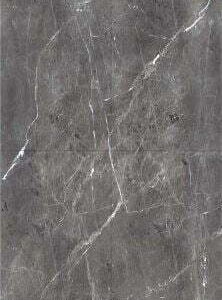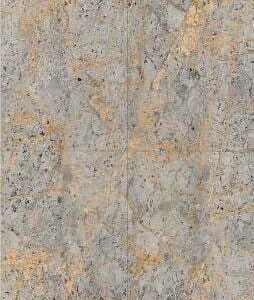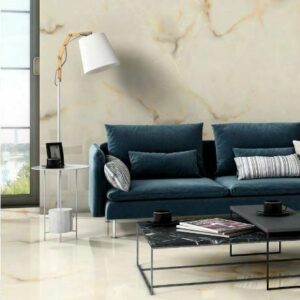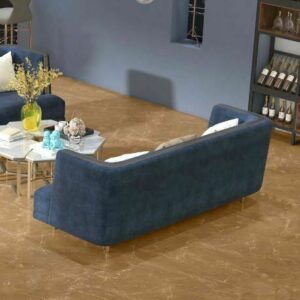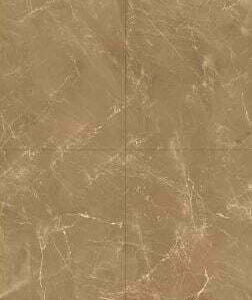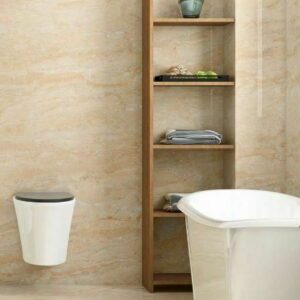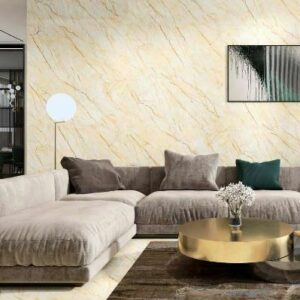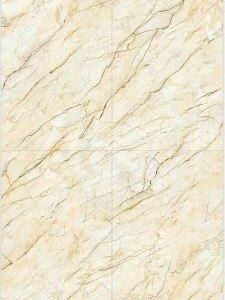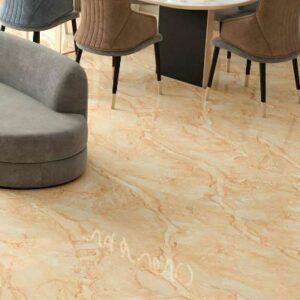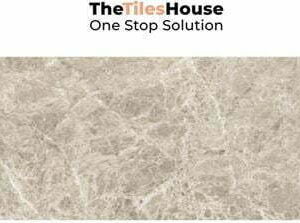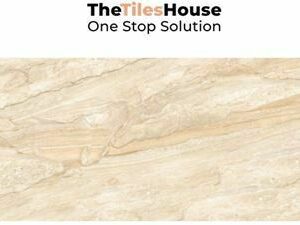MARBLE LOOK TILES
Marble look tiles are a classic and elegant choice for flooring, walls, kitchen countertops, and backsplashes. They come in a wide variety of colors, patterns, and finishes, making them versatile enough to fit into any style of home.
Pros of Marble Look Tile:
Beauty and Elegance: Marble is a natural stone that adds a touch of luxury and sophistication to any space. Its unique veining patterns create a visually stunning look.
Durability: Marble is a relatively hard stone that can last for many years with proper care. It’s resistant to heat, making it suitable for kitchens and bathrooms.
Versatility: Marble tiles come in a wide variety of colors, patterns, and finishes, so you can find a style that complements any décor.
Relatively Low Maintenance: Marble requires minimal maintenance compared to other natural stone materials. Regular cleaning with a mild detergent and water is usually sufficient.
Cons of Marble Look Tile:
Cost: Marble can be a more expensive flooring option compared to ceramic or porcelain tiles.
Porosity: Marble is a porous stone, meaning it can absorb stains if not properly sealed. It’s not ideal for high-traffic areas or spill-prone locations.
Scratching: Marble can scratch more easily than some other flooring materials.
Slippery When Wet: Polished marble tiles can be slippery when wet, especially for showers or bathroom floors. Consider honed or tumbled marble finishes for better slip resistance in these areas.
Types of Marble Tile Finishes:
Polished: The most cmmon finish, which creates a reflective, shiny surface.
Honed: Creates a smooth, matte finish with a slight sheen. Offers better slip resistance than polished marble.
Tumbled: A textured finish that hides imperfections and provides the best slip resistance.
What are the benefits of wood marble tiles compared to traditional marble?
Wood look ceramic & porcelain tiles vs. Traditional Marble Tiles:
Benefits of Wood Look Tiles:
Water Resistant: Ideal for moisture-prone areas like kitchens and bathrooms.
Easy Maintenance: Requires minimal cleaning compared to marble.
Durable: More resistant to scratches, dents, and fading than real wood or marble.
Variety of Styles: Wider variety of wood grain patterns, colors, and finishes.
Cost-effective: Generally less expensive than traditional marble.
Drawbacks of Wood look tiles:
Not real wood: Lacks the natural warmth and texture of real wood underfoot.
Can look artificial: Some wood-look tiles might have a less convincing wood grain design.
Traditional Marble Tiles:
Natural Beauty: Offers a timeless elegance with unique veining patterns.
Heat Resistant: Suitable for kitchens and areas exposed to moderate heat.
Durability (with care): Can last for many years with proper sealing and maintenance.
Drawbacks of Traditional Marble Tiles:
Porous: Susceptible to stains if not sealed properly.
Scratch prone: Can scratch more easily than some other materials.
Slippery when wet: Polished marble can be slippery, especially for showers or bathrooms.
Higher Maintenance: Requires regular sealing and cleaning with specific products.
Cost: Generally more expensive than wood-look tiles.
How do marble stone tiles differ from ceramic or porcelain tiles?
Here’s a breakdown of the key differences between marble stone tiles and ceramic or porcelain tiles:
Material:
Marble: A natural stone quarried from the earth. It comes in various colors and veining patterns, making each tile unique.
Ceramic and Porcelain: Man-made tiles manufactured from clay, sand, and other minerals. They are colored with pigments and can be designed to mimic the look of natural materials like wood or stone, including marble.
Appearance:
Marble: Offers a timeless and luxurious look with natural variations in color and veining.
Ceramic and Porcelain: Can be designed to look like marble, but the patterns are generally more uniform and predictable. They come in a wider variety of colors, patterns, and finishes compared to natural stone.
Durability:
Marble: Relatively hard stone, but can scratch more easily than some other materials. It’s susceptible to staining if not properly sealed.
Ceramic and Porcelain: Generally very durable and resistant to scratches, stains, and fading. They require minimal maintenance.
Are marble look floor tiles suitable for high-traffic areas?
Marble look floor tiles, typically made from ceramic or porcelain, can be suitable for high- traffic areas with some qualifications. Here’s a breakdown of the pros and cons to help you decide:
Pros of Marble Look Floor Tiles for High Traffic:
Durable: Porcelain and Ceramic tiles are generally very hard and resistant to scratches, dents, and wear-and-tear, making them suitable for high-traffic areas.
Water Resistant: Unlike real marble, these tiles are non-porous and won’t absorb spills or moisture, making them ideal for kitchens, bathrooms, and entryways.
Easy to Maintain: Regular cleaning with a mop and occasional deeper cleaning is sufficient. They don’t require sealing like natural stone.
Variety of Styles: They come in a wide range of realistic marble patterns, colors, and finishes, allowing you to achieve the aesthetic of marble without the drawbacks.
Cons to Consider:
Potential for Chipping: While generally scratch-resistant, very heavy objects or sharp impacts can cause chips on the tile surface.
Slippery When Wet: Polished finishes can be slippery, especially for high-moisture areas like bathrooms. Opt for matte or textured finishes for better slip resistance in these areas.
Quality Variations: The durability and realism of the marble look can vary depending on the tile quality. Choose high-quality tiles from reputable manufacturers for better performance in high-traffic areas.
What maintenance is required for wood marble tiles?
These tiles are generally very easy to maintain:
Regular Cleaning: Sweep or mop with a damp mop and a mild, pH-neutral cleaner. Avoid harsh chemicals or abrasive cleaners that can damage the tile surface.
Deeper Cleaning: Occasionally, you might need a deeper clean. Use a manufacturer- recommended tile cleaner or a solution of warm water and white vinegar.
Minimize Abrasives: Avoid using abrasive cleaning pads or scouring powders, as they can scratch the tile surface.
What is the price range of marble look tiles per square foot?
The price of marble look tiles per square foot in India can vary depending on several factors, here’s a breakdown to give you an idea:
Price Range:
Low-end (₹30 – ₹100 per square foot): This range might include basic white or light-colored marble tiles with smaller sizes and simpler finishes.
Mid-range (₹100 – ₹200 per square foot): This is a more common range for a wider variety of marble tiles. You can find options with different colors, patterns (veining), finishes (polished, honed, tumbled), and some larger format tiles.
High-end (₹200+ per square foot): This includes premium marble tiles with unique veining patterns, rare or exotic marble varieties, intricate designs, large format tiles, and high-quality finishes.
Active Filters:
Clear Filters
-
Dyna Endless Vitrified Tile 24*48 Inch
₹80.00/ Sqft -
Royal Dyna Beige Vitrifed Tile 24*48 Inch
₹50.00/ Sqft
Showing all 28 results

